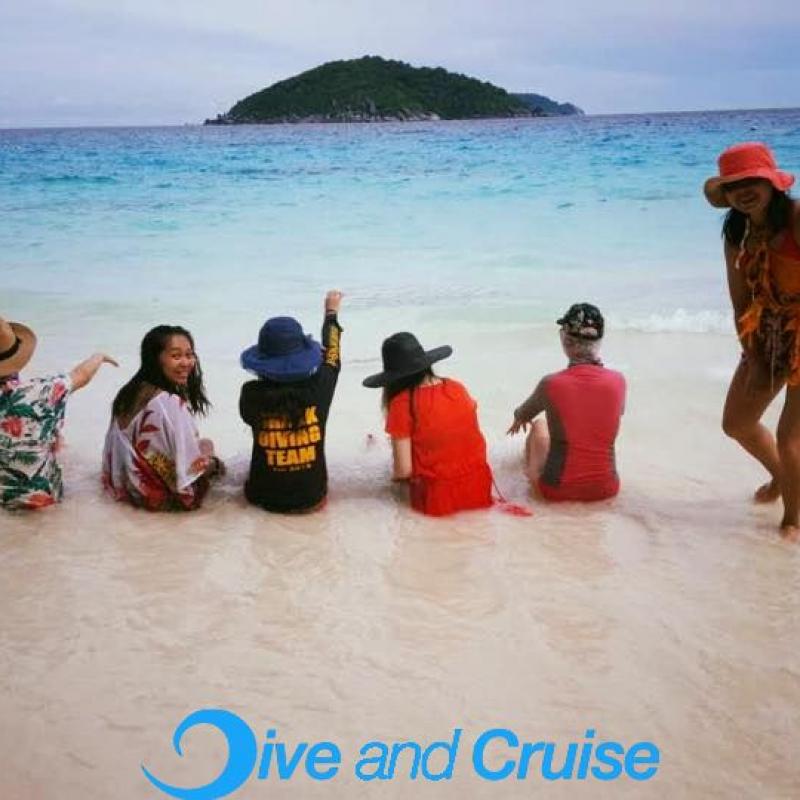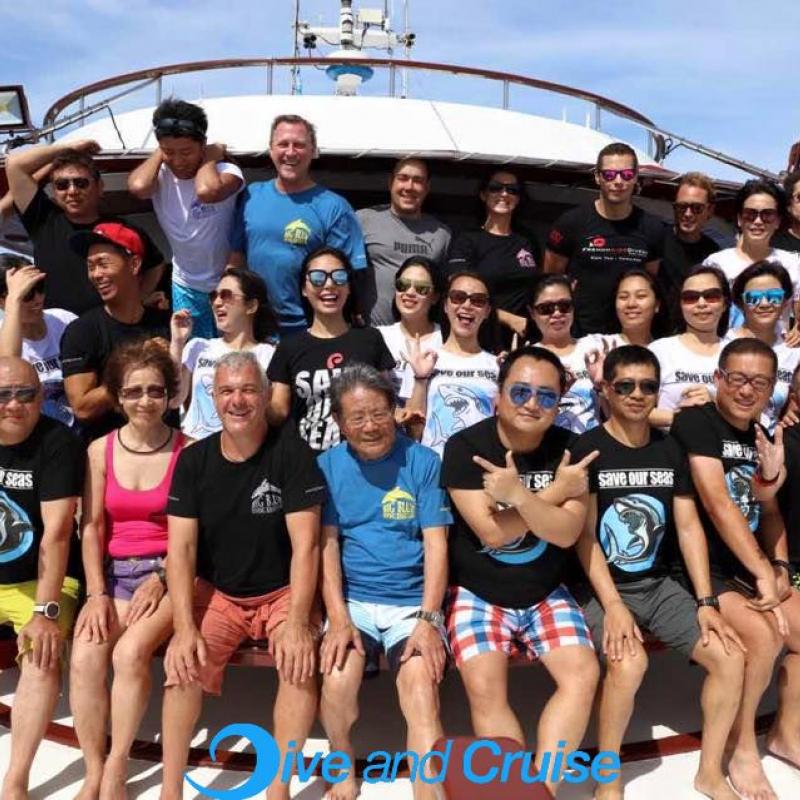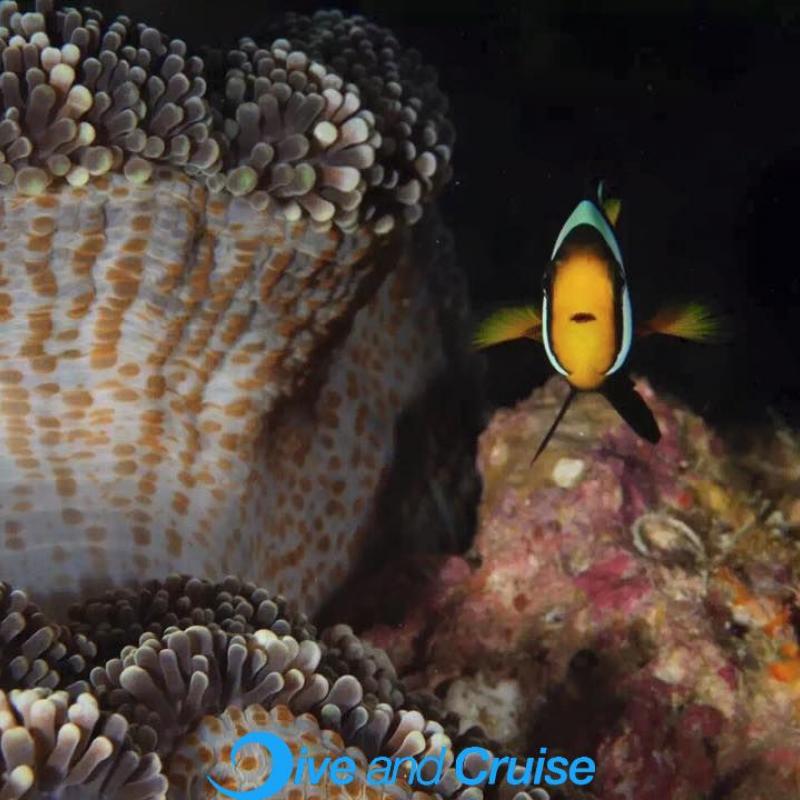Sawadee Ka - Koh Similan
Our team member - Shueri, just came back from a 5D/4N liveaobard tripin the Similans (09 - 13 November, 2015). This time, Shueri has joined one of our partners - Paupau Dive Club from China on board with MV Hallelujah.
Similan Marine Park is open around 15th October to 15th May every year. However, the best diving period in Similan we would consider as from November to April, as the beginning of the season and the end of the season, the sea condition can be sometimes quite rough.
> "If you’re looking to do the most amount of diving in the shortest time, then a Liveaboard is the best way to see the dive sites of the Similan and Surin Islands. Imagine waking up to look out your window at a pristine empty beach. Then spending your days diving world class dive sites and enjoying long surface intervals filled with fun and relaxation, while at nights dining on first class meals." - Big Blue Diving Khao Lak.
Similan Liveaboard Itinerary
80% of the dive liveaboards in the Similan offer a regular 4 nights trip, while few other boats also can offer shorter trip and a very few boats can offer 5/ 6/ 7 nights trip.
Most of the liveaboards offer the similar route allowing you to dive 6/7 times between the Similan's islands N.4 to N.9 (Islands 1 to 3 being forbidden to the tourist for the turtle reproduction) then the boat head up to Koh Tachai for a night or sunset dive. The day after it's the big game with the famous Richelieu Rock dive site, located in the Surin Marin Park, 4h north-west of Koh Tachai, here you will have 2 dives and depending the weather maybe a third one then the boat will go bakc to Koh Tachai for the night. The day after and unfortunatly the last day you will finish with the Manta Point in Koh Bon, mainly on "West Ridge" dive site then head back to Khaolak and dive the Boonsung Wreck nearby Tap Lamu.
This classic itinerary offers a wide variety of underwater topography between huge boulder, slope dive and pinnacle unprotected.
Similan Dive Sites
Dive sites informations are written by @MV Hallelujah, Big Blue Diving Khao Lak.
Richelieu Rock (Suitable for all levels of divers)
Richelieu Rock is part of the Surin national park just North of the Similan Islands it is quite arguably one of the best dive site in the world and with no doubt the best dive site in Thailand!
The “croissant-shaped reef” was discovered (with the help of local fishermen) and named by Jacques-Yves Cousteau with the inspiration of Cardinal Richelieu. The reason for this was the amazing purple and white soft coral that reminded him of the robe that the cardinal wore.
Richelieu Rock is one main pinnacle with some smaller rocks and out cropping surrounding it. The dive site is incredibly diverse in the marine life that you can find; from frog fish and seahorses to whale sharks and barracuda this site has something for everyone.
KOH BON (Sometimes can have currents)
Koh Bon is located 20 kilometers north of the Similan island and is a limestone island which contrasts to the numerous granite islands at the Similan Islands and also Koh Tachai.
This distinction in the rock of the dive site gives it a very different feel to the other sites around this around. This site gives many small cracks for excellent macro life to live; blue dragon nudibranchs, peacock mantis shrimps, coral banded cleaner shrimp and many more.
Koh Bon is famous as a manta ray cleaning station. Manta rays can be found here all season long but are most commonly seen between December and March.
KOH TACHAI (Can have stronger currents so can be a difficult dive sometimes)
Koh Tachai is a small island located North of the Similan Islands however it still belongs to the Similan National park. It is infamous for big currents at certain times of the month. These big current do invariably bring the big life with it.
Diving Koh Tachai is never dull you will find big schools of travelly, rainbow runners and fusiliers give movement to the site. Often you can see passing manta rays and whale sharks that are welcome visitors to the site.
Along with all of these fish you can also find giant morays, many different type of lion fish, oceanic trigger fish and lots of macro life.
ANITA'S REEF (Easy Dive, Suitable for all levels of divers)
Anita’s reef is situated on the east side of the Similans islands numbers five and six. This dive site consists of sloping sands from approximately 5 – 30 meters with amazing bombies sporadically placed throughout to icy white sands. On this gentle slope you can see some Lionfish, some beautiful Clown Triggerfish or some illusive long-nosed hawkfish.
The deeper areas of the dive site and you will find some wonderful soft tree corals or huge sea fans covered by glassfish and juvenile fish. Out in the blue ou will see may blue fin travelly coming in to hunt on the site.
ELEPHANT HEAD ROCK (Suitable for all levels of divers)
Elephant Head Rock gets its name from the unusual granite rock formations that protrude from the water giving the look of an elephants head, This dive site contrasts with other dive sites around the area as it is further away from the protection of any island. You can therefore see different marine life that you wouldn’t so easily find in other sites around the Similan Islands. The massive granite boulders form some very interesting swim throughs and channels that add some excitement to the dive. In amongst all of the cracks, under hangings and dark spaces you can find purple fire gobies, ornate ghost pipefish, Andaman sweetlips and perhaps a sheltering hawksbill turtle. Deeper on the dive site you can go searching for the Similan Jawfish, McCosker’s dwarf wrasse and if you are lucky you may come across a black tip or leopard shark.
BREAKFAST BEND (Suitable for all levels of divers)
This is a very easy dive site for all levels as if there is any current present you can simply spend your dive ‘going with the flow’! Located on the East side of island number nine this dive site offers something for everyone and is a great relaxing early morning dive. The name Breakfast bend comes from the light that emerges across the dive site early in the morning and the name three trees comes from the distinctive three trees that can be seen on the side of the island!!
BOONSUNG WRECK (Suitable for all levels of divers)
Boonsung wreck is a located only a few kilometers from Tap Lamu Pier so is a great dive site for day trips. Originally a tin dredging vessel that sank over 20 years ago and was broken up by the tsunami it is a great nursery for a plethora of life. The dive lies at a maximum depth of 20 meters so is a fantastic option for divers of any level. Huge schools of fusiliers, juvenile barracuda and snapper surround the dive site, and life covers ever crack and post; stone fish, lion fish, nudibranchs and honey comb morays are easy find around the site.
If you wish to know more about our liveaboard trip in Similan, you can check out our partner's video from Big Blue Dive Centre on M/V Hallelujah here:
Dive and Cruise - SImilan with Hallelujah (Big Blue) 2015 from Dive and Cruise on Vimeo.
Dive and Cruise Team





























